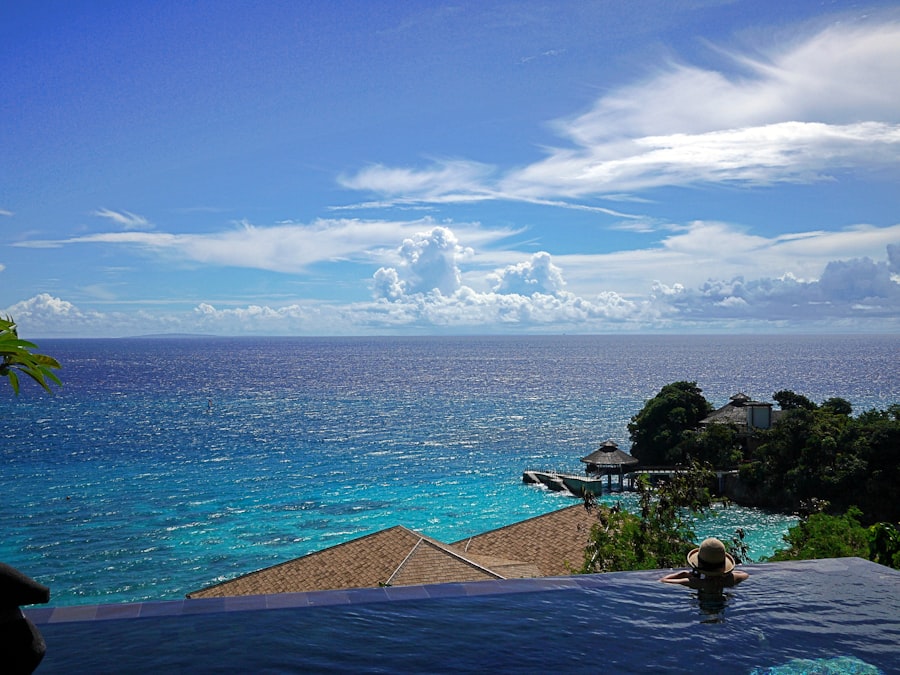Download links
How to install Preserving 30jili Banaue Rice Terraces APK?
1. Tap the downloaded Preserving 30jili Banaue Rice Terraces APK file.
2. Touch install.
3. Follow the steps on the screen.
Description
The Banaue Rice Terraces, often referred to as the “Eighth Wonder of the World,” are a remarkable feat of engineering and agriculture that date back over 2,000 years. Located in the mountainous region of Ifugao in the Philippines, these terraces were carved into the mountainsides by the indigenous Ifugao people. The construction of these terraces is not merely a testament to human ingenuity but also reflects a deep understanding of sustainable agricultural practices.
This intricate system of irrigation and terracing has been passed down through generations, showcasing the rich cultural heritage and agricultural knowledge of the Ifugao. The historical significance of the Banaue Rice Terraces extends beyond their agricultural utility; they are a symbol of the Ifugao people’s identity and cultural practices.
The terraces are interwoven with local traditions, rituals, and social structures, serving as a backdrop for community life. The Ifugao people have developed a unique relationship with their environment, which is reflected in their agricultural practices, spiritual beliefs, and communal activities. The terraces are not just fields; they are living landscapes that embody the history, culture, and resilience of a people who have thrived in harmony with nature for millennia.
UNESCO recognized this cultural landscape’s importance by designating it as a World Heritage Site in 1995, further solidifying its status as a vital part of global heritage.
Key Takeaways
- The Banaue Rice Terraces are a UNESCO World Heritage site and are considered a symbol of the Philippines’ rich cultural heritage.
- Threats to the preservation of the Banaue Rice Terraces include environmental degradation, population decline, and lack of government support.
- Efforts to preserve the Banaue Rice Terraces include conservation projects, community-based tourism initiatives, and educational programs.
- Sustainable tourism is crucial in preserving the Banaue Rice Terraces as it promotes responsible travel and supports the local economy without causing harm to the environment.
- Local communities play a vital role in preserving the Banaue Rice Terraces through traditional farming practices, cultural preservation, and community-led conservation efforts.
- Future challenges and opportunities for preserving the Banaue Rice Terraces include climate change adaptation, sustainable development, and the potential for increased tourism revenue.
Threats to the Preservation of the Banaue Rice Terraces
Climate Change: A Major Threat
One of the most pressing issues is climate change, which has led to unpredictable weather patterns, including prolonged droughts and intense rainfall. These climatic shifts can cause soil erosion, landslides, and damage to the intricate irrigation systems that sustain the terraces. As temperatures rise and rainfall becomes more erratic, the delicate balance that has allowed these terraces to flourish for centuries is increasingly at risk.
Socio-Economic Factors: A Decline in Traditional Practices
In addition to environmental challenges, socio-economic factors also pose significant threats to the preservation of the Banaue Rice Terraces. The younger generation is increasingly migrating to urban areas in search of better economic opportunities, leading to a decline in traditional farming practices. This urban migration results in abandoned terraces that fall into disrepair, as fewer hands are available to maintain them.
The Impact on Cultural Significance
Furthermore, the influx of modern agricultural techniques and commercial farming practices undermines the traditional methods that have been honed over generations. The shift towards cash crops and industrial agriculture diminishes the cultural significance of rice farming and threatens the very existence of the terraces themselves.
Efforts to Preserve the Banaue Rice Terraces

Recognizing the urgent need for preservation, various stakeholders have initiated efforts to protect and restore the Banaue Rice Terraces. Local government units, non-governmental organizations (NGOs), and international bodies have collaborated on projects aimed at revitalizing these ancient agricultural systems. One notable initiative is the establishment of community-based programs that empower local farmers to adopt sustainable practices while preserving their cultural heritage.
These programs often include training sessions on traditional farming techniques, organic agriculture, and soil conservation methods that align with modern environmental standards. Moreover, restoration projects have been launched to rehabilitate damaged terraces and improve irrigation systems. These efforts often involve community participation, ensuring that local knowledge and skills are integrated into restoration practices.
For instance, initiatives like the “Ifugao Rice Terraces Rehabilitation Project” focus on repairing eroded terraces and re-establishing traditional water management systems. By involving local communities in these projects, stakeholders not only address immediate environmental concerns but also foster a sense of ownership and pride among the Ifugao people regarding their cultural heritage.
The Importance of Sustainable Tourism in Preserving the Banaue Rice Terraces
| Metrics | Data |
|---|---|
| Number of tourists visiting annually | Approximately 200,000 |
| Revenue generated from tourism | Estimated at 1.5 million |
| Percentage of local community involved in tourism | Over 70% |
| Conservation efforts funded by tourism | Supports reforestation and terrace maintenance |
| Number of UNESCO World Heritage sites preserved | One of the 5 UNESCO World Heritage sites in the Philippines |
Sustainable tourism has emerged as a vital component in the preservation of the Banaue Rice Terraces. As global interest in these stunning landscapes grows, responsible tourism practices can provide much-needed economic support for local communities while promoting conservation efforts. Tourists visiting the terraces contribute to the local economy through accommodations, food services, and handicrafts, creating financial incentives for residents to maintain their agricultural practices and preserve their cultural heritage.
However, it is crucial that tourism development is approached with sustainability in mind. Unregulated tourism can lead to environmental degradation, overcrowding, and cultural commodification. To mitigate these risks, local authorities have implemented guidelines that promote responsible tourism practices.
These include limiting visitor numbers during peak seasons, encouraging eco-friendly accommodations, and promoting cultural sensitivity among tourists.
The Role of Local Communities in Preserving the Banaue Rice Terraces
Local communities are at the heart of efforts to preserve the Banaue Rice Terraces. The Ifugao people’s deep-rooted connection to their land and traditions makes them indispensable stewards of this cultural landscape. Their knowledge of traditional farming techniques, water management systems, and ecological practices is crucial for maintaining the terraces’ integrity.
Community-led initiatives often focus on education and capacity building, empowering local farmers to take an active role in conservation efforts. Moreover, community engagement fosters a sense of pride and ownership among residents regarding their cultural heritage. By involving local people in decision-making processes related to tourism development and agricultural practices, stakeholders can ensure that preservation efforts align with community values and aspirations.
Initiatives such as cultural festivals and educational programs help raise awareness about the importance of preserving the rice terraces not only for economic reasons but also for their cultural significance. This grassroots involvement is essential for creating a sustainable future for both the terraces and the Ifugao way of life.
Future Challenges and Opportunities for Preserving the Banaue Rice Terraces

Looking ahead, several challenges and opportunities will shape the future of the Banaue Rice Terraces. Climate change remains a significant concern; however, it also presents an opportunity for innovation in agricultural practices. As researchers explore climate-resilient crops and sustainable farming techniques, there is potential for integrating modern science with traditional knowledge to enhance food security while preserving cultural heritage.
Additionally, as global awareness of environmental issues grows, there is an increasing demand for authentic cultural experiences among travelers. This trend can be harnessed to promote sustainable tourism that benefits local communities while ensuring that preservation efforts are prioritized. By leveraging technology and social media platforms, local communities can share their stories and traditions with a global audience, fostering greater appreciation for their heritage.
However, challenges such as urban migration and economic pressures will require ongoing attention. It is essential to create viable economic opportunities within rural areas that encourage younger generations to remain engaged with their cultural heritage. By investing in education, infrastructure, and sustainable agricultural practices, stakeholders can help ensure that future generations continue to uphold the traditions that have sustained the Banaue Rice Terraces for centuries.
In conclusion, while the Banaue Rice Terraces face numerous threats from environmental changes and socio-economic shifts, there are concerted efforts underway to preserve this unique cultural landscape. Through community engagement, sustainable tourism practices, and innovative agricultural solutions, there is hope for maintaining this extraordinary testament to human ingenuity and cultural resilience for generations to come.
FAQs
What are the Banaue Rice Terraces?
The Banaue Rice Terraces are ancient terraces carved into the mountains of Ifugao in the Philippines. They are often referred to as the “Eighth Wonder of the World” and are a UNESCO World Heritage Site.
How old are the Banaue Rice Terraces?
The Banaue Rice Terraces are estimated to be over 2,000 years old, making them one of the oldest and most remarkable examples of terrace farming in the world.
What is the significance of the Banaue Rice Terraces?
The Banaue Rice Terraces are not only a stunning example of ancient engineering and agricultural practices, but they also hold cultural and historical significance for the indigenous people of the Ifugao region.
How were the Banaue Rice Terraces constructed?
The terraces were painstakingly carved into the mountainside by hand, using only basic tools and the labor of the Ifugao people. The construction of the terraces is a testament to the ingenuity and skill of the ancient Ifugao farmers.
What is the current state of the Banaue Rice Terraces?
While the Banaue Rice Terraces are a marvel to behold, they are also facing challenges such as erosion, deforestation, and the migration of younger generations away from traditional farming practices. Efforts are being made to preserve and protect the terraces for future generations.





